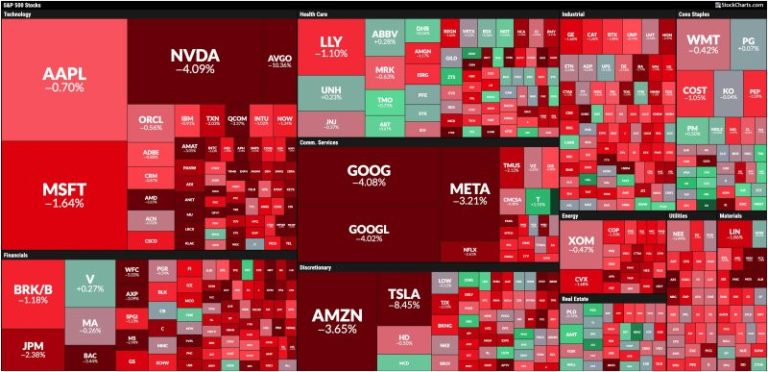Broad-Based Stock Market Selloff: How to Position Your Portfolio
Understanding the Current Market Environment
The recent broad-based stock market selloff has undoubtedly left many investors feeling uneasy about the future of their portfolios. With various factors such as inflation concerns, rising interest rates, and geopolitical tensions contributing to market volatility, it is essential for investors to assess their current positions and make strategic decisions to navigate through these challenging times.
Diversification as a Key Strategy
In times of market turmoil, diversification plays a crucial role in protecting your portfolio from excessive risks. By spreading investments across different asset classes such as stocks, bonds, real estate, and commodities, investors can minimize the impact of sudden market downturns on their overall wealth. Allocating a portion of your portfolio to defensive assets, such as gold or government bonds, can provide a hedge against market volatility and safeguard your investments during turbulent times.
Rebalancing Your Portfolio
Rebalancing your portfolio is another vital strategy to consider during a market selloff. As the values of different asset classes fluctuate, your portfolio’s allocation may deviate from your original investment plan. By periodically rebalancing your portfolio to maintain your desired asset allocation, you can capitalize on opportunities to buy undervalued assets and sell overvalued ones. This disciplined approach can help you stay on track with your long-term investment goals while navigating through market uncertainties.
Selective Stock Picking
While broad-based market selloffs can impact the performance of many stocks, there may still be opportunities for selective stock picking. Conducting thorough research and fundamental analysis can help investors identify undervalued companies with strong growth potential and resilient business models. By focusing on companies with sound financials, competitive advantages, and robust management teams, investors can position themselves to benefit from market recoveries and outperform during turbulent periods.
Risk Management
In times of market volatility, effective risk management is paramount to protect your investments and preserve capital. Setting stop-loss orders, implementing trailing stops, and using options strategies can help manage downside risks and limit potential losses. Additionally, maintaining a cash reserve for opportunistic buying, and having a diversified investment approach, can provide a cushion against market downturns and enhance your portfolio’s resilience in turbulent times.
Staying Informed and Adapting to Market Changes
Staying informed about market developments, economic indicators, and geopolitical events is essential for making informed investment decisions during turbulent times. Keeping abreast of changing market conditions, adjusting your investment strategy accordingly, and seeking professional guidance can help you navigate through market uncertainties and position your portfolio for long-term success.
Conclusion
In conclusion, the recent broad-based stock market selloff underscores the importance of strategic portfolio positioning and risk management in volatile market environments. By diversifying your investments, rebalancing your portfolio, selectively picking stocks, and managing risks effectively, you can navigate through market downturns and capitalize on opportunities for long-term wealth creation. By staying informed, adapting to market changes, and maintaining a disciplined investment approach, you can protect your portfolio and achieve your financial goals despite the challenges posed by market volatility.



